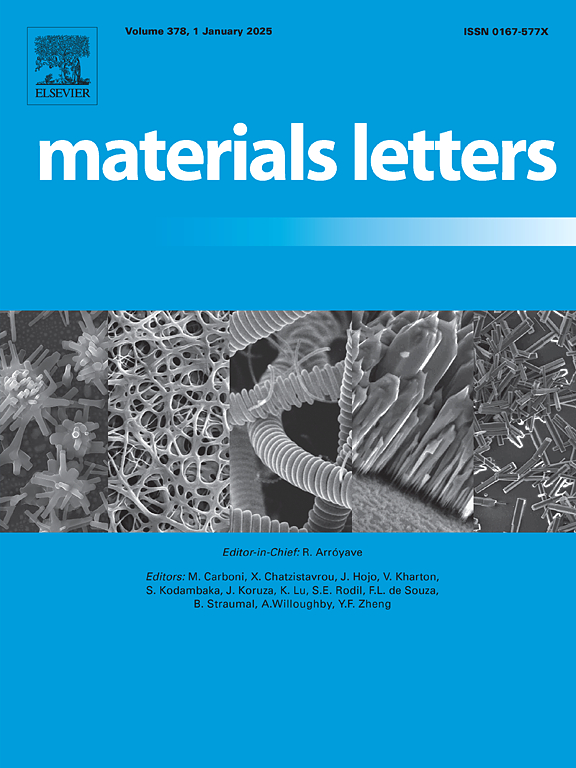Buried interface modification via dimethylamine iodide for efficient p-i-n perovskite solar cells
IF 2.7
4区 材料科学
Q3 MATERIALS SCIENCE, MULTIDISCIPLINARY
引用次数: 0
Abstract
As an emerging photovoltaic technology, perovskite solar cells (PSCs) have experienced rapid advancement due to their superior photoelectric properties. However, the power conversion efficiency (PCE) and stability of inverted p-i-n PSCs are constrained by buried interface defects formed by the inadequate wettability of perovskite precursors on the self-assembled monolayers (SAMs). This study addresses this issue by modifying the buried interface of perovskite films with dimethylammonium iodide (DMAI). The treatment with DMAI results in improved morphology of perovskite films and enhances the carrier transport performance. Consequently, the PCE of p-i-n PSCs treated with DMAI reaches 23.72 %, compared to 21.01 % for the control devices. Furthermore, the long-term stability of the PSCs has been improved, maintaining over 80 % of their initial PCE after 30 days of storage at room temperature and 40 % relative humidity.
利用碘化二甲胺对p-i-n钙钛矿太阳能电池进行界面改性
钙钛矿太阳能电池(PSCs)作为一种新兴的光伏技术,由于其优越的光电性能而得到了迅速的发展。然而,由于钙钛矿前驱体在自组装单层(SAMs)上的润湿性不足而形成的界面埋没缺陷限制了倒p-i-n PSCs的功率转换效率(PCE)和稳定性。本研究通过用二甲基碘化铵(DMAI)修饰钙钛矿膜的埋藏界面来解决这一问题。DMAI处理改善了钙钛矿薄膜的形貌,提高了载流子输运性能。因此,DMAI处理的p-i-n PSCs的PCE达到23.72%,而对照组的PCE为21.01%。此外,PSCs的长期稳定性得到了改善,在室温和40%相对湿度下储存30天后,PCE保持在初始PCE的80%以上。
本文章由计算机程序翻译,如有差异,请以英文原文为准。
求助全文
约1分钟内获得全文
求助全文
来源期刊

Materials Letters
工程技术-材料科学:综合
CiteScore
5.60
自引率
3.30%
发文量
1948
审稿时长
50 days
期刊介绍:
Materials Letters has an open access mirror journal Materials Letters: X, sharing the same aims and scope, editorial team, submission system and rigorous peer review.
Materials Letters is dedicated to publishing novel, cutting edge reports of broad interest to the materials community. The journal provides a forum for materials scientists and engineers, physicists, and chemists to rapidly communicate on the most important topics in the field of materials.
Contributions include, but are not limited to, a variety of topics such as:
• Materials - Metals and alloys, amorphous solids, ceramics, composites, polymers, semiconductors
• Applications - Structural, opto-electronic, magnetic, medical, MEMS, sensors, smart
• Characterization - Analytical, microscopy, scanning probes, nanoscopic, optical, electrical, magnetic, acoustic, spectroscopic, diffraction
• Novel Materials - Micro and nanostructures (nanowires, nanotubes, nanoparticles), nanocomposites, thin films, superlattices, quantum dots.
• Processing - Crystal growth, thin film processing, sol-gel processing, mechanical processing, assembly, nanocrystalline processing.
• Properties - Mechanical, magnetic, optical, electrical, ferroelectric, thermal, interfacial, transport, thermodynamic
• Synthesis - Quenching, solid state, solidification, solution synthesis, vapor deposition, high pressure, explosive
 求助内容:
求助内容: 应助结果提醒方式:
应助结果提醒方式:


